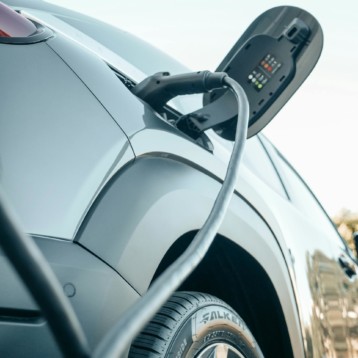A small scale test currently being conducted in Germany might one day change the way we use both public and private transportation. Two local buses have been fitted with a unique system that can charge them wirelessly using PRIMOVE inductive wireless charging plates located under the surface of the road where the bus stop at each station.
During the next 12 months the “Primove Mannheim” research project will take place in the city of Mannheim in southwestern Germany with the aim of testing whether the technology could help cut costs in the public transportation. The German bus operator Rhein-Neckar-Verkehr GmbH (RNV) will be testing 2 electric buses that will charge wirelessly as they go about their usual route on each of their bus stops.
–
–
Primove technology uses transmission plates that will be fitted under the road in each bus stop. When the bus reaches the station receiving plates fitted under the bus will receive power without any need for physical contact (just like your common electric toothbrush but with significantly more power). The logic behind the Primove Mannheim project is simple – simplify the charging process of electric public transportation, allow for smaller, cheaper and lighter batteries but still maintain a driving range long enough to complete an entire route.
–
–
Although busses typically move around a predetermined route, they are much more flexible than trains or light rail solutions and require almost no additional infrastructure to operate (besides existing rods). Eclectic buses which have started appearing in recent years in small quantities around the world have been able to reduce pollution, noise and (on paper at least) cut long term costs. However, in practice they have been expensive (in great part because of expensive large batteries they require), heavy (carrying a large amount of batteries on the expense of passengers) and even more importantly, require long charging time which reduces their efficiency (you need another bus to run the route while the first one stays in the station for charging.
–
–
Primove hope to change all of that by allowing busses to charge on the go, small amounts each time but enough so that the bus will be able to relay on smaller batteries the a more conventional electric bus with the same range. Part of the testing will focus on how much power the bus will get on each stop in real world conditions. After all most busses stop for a very short period of time on each station, and stopping for a longer time just in order to recharge will prolong the ride and irritate passengers.
–
–
Primove went to great lengths to ensure the safety of the system. The charger buried beneath the street stays off as long as a special sensor does not detect that a bus with a Primove inductive wireless charger is directly above it. Only then will it initiate chagrining (this is done in order to comply with electromagnetic interference protection requirements).
–
–
More information can be found on the Primove website.
–
TFOT has covered other electric cars charging technologies including the Plugless Power Induction, developed by Evatran as well as many electric cars including the Tesla Roadster in 2008 and the Shelby which can reach 60 mph in an amazing 2.5 seconds.
–
A short video showing the benefits of the Primove system













